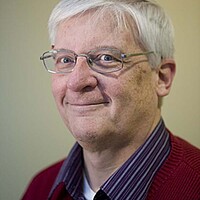Lester Brown: Sustainable energy is here
Loading...
Fracking for oil and gas is booming across the United States. Low gasoline prices are making it affordable to wheel around in an SUV that gets 15 miles per gallon, at least for now.
But out of sight of most consumers there’s an energy revolution brewing, says Lester Brown. Consider:
• Denmark now gets more than 60 percent of its electricity from wind.
• China receives more electricity from its wind farms than from its nuclear power plants.
• Texas, the No. 1 oil-producing state, is now the No. 1 wind-power state, with plans to export the electricity generated to other states. Kansas and many other “wind rich” states are following suit.
The rise of sustainable energy – mainly wind and solar – is going to take many people by surprise, says Mr. Brown, founder of the Earth Policy Institute, whose latest book, “The Great Transition: Shifting from Fossil Fuels to Solar and Wind Energy,” with coauthors Janet Larsen, J. Matthew Roney, and Emily E. Adams, tracks the seismic changes now under way.
Among those who see what’s happening are billionaire investors such as Warren Buffett and Philip Anschutz, Brown says.
“The billionaires are investing in renewable energy: Warren Buffett invested $15 billion,” he says. “There’s a whole list of billionaires just piling money into this. What that does for investment is it says, This is where the smart money is going. You don’t get to be a billionaire by being stupid.”
We’re going to be surprised even just a decade from now by how much the energy picture has changed, says Brown, who’s been awarded a “genius grant” from the MacArthur Foundation and has been called “one of the world’s most influential thinkers” and “the guru of the environmental movement.”
Solar panels are becoming affordable alternatives to conventional electricity from the grid as their price drops, their efficiency in generating electricity rises, and new ways of financing them emerge.
“Almost all the big homebuilders in this country either offer or automatically put solar panels on new rooftops,” Brown says. “Because buying a house with no electric bill is kind of neat.”
Home solar panels can be financed a number of ways, including blending the cost into the mortgage or allowing a vendor to install and own the panels.
Obviously solar and wind don’t pollute the air or “disrupt the climate,” he says, factors that influence some people. But it’s the new economics of sustainable energy that will really drive the change, he adds.
Farmers and ranchers “really like wind farms,” he says. Some ranchers are earning more from the wind turbines on their land than from their cattle sales.
A field of corn converts about 1 percent of the sunlight that falls on it into energy, he says. But solar panels now convert up to 20 percent of the sunlight that falls on them into electricity.
“A farmer in Iowa can plant an acre of corn that will produce about $1,000 worth of ethanol,” Brown says. “But if he puts a wind turbine on that acre he can generate $300,000 of electricity per year.”
People will be able to charge their electric cars from energy off their rooftops. “You control it,” he says.
Storing the energy produced by solar panels for later use has been an issue. But the “gigafactories” being built by entrepreneur Elon Musk to produce home and commercial storage batteries show that big players are becoming interested.
“For a lot of our lifetimes, we’ve been getting energy [oil] from halfway around the world,” Brown says. “Now suddenly we have rooftop panels and we’re getting energy from 10 feet over our heads.”






